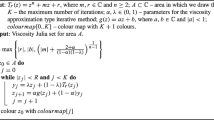Abstract
This study analyzes the complexity of ultraslow diffusion process using both the classical Shannon entropy and its general case with inverse Mittag-Leffler function in conjunction with the structural derivative. To further describe the observation process with information loss in ultraslow diffusion, e.g., some defects in the observation process, two definitions of fractional entropy are proposed by using the inverse Mittag-Leffler function, in which the Pade approximation technique is employed to numerically estimate the diffusion entropy. The results reveal that the inverse Mittag-Leffler tail in the propagator of the ultraslow diffusion equation model adds more information to the original distribution with larger entropy. Smaller value of α in the inverse Mittag-Leffler function indicates more complicated of the underlying ultraslow diffusion and corresponds to higher value of entropy. The proposed definitions of fractional entropy can serve as candidates to capture the information loss in ultraslow diffusion.
Similar content being viewed by others
References
N.V. Brilliantov, T. Poschel. Kinetic Theory of Granular Gases. Oxford University Press, Oxford, 2004.
W. Chen, Non -power-function metric: a generalized fractal. Math. Phys. (2017). Preprint at viXra:1612.0409; http://vixra.org/pdf/1612.0409v1.pdf.
W. Chen, Time -space fabric underlying anomalous diffusion. Chaos Soliton Fract. 28 (2006) 923–929.
W. Chen, Y. Liang, X. Hei, Structural derivative based on inverse Mittag-Leffler function for modeling ultraslow diffusion. Fract. Calc. Appl. Anal. 19, No 5 (2016), 1250–1261; DOi: 10.1515/fca-2016-0064; https://www.degruyter.com/view/j/fca.2016.19.issue-5/issue-files/fca.2016.19.issue-5.xml
S.I. Denisov, Y.S. Bystrik, H. Kantz, Limiting distributions of continuous-time random walks with super heavy-tailed waiting times. Phys. Rev. E 87 (2013), Art. # 022117.
S.I. Denisov, H. Kantz, Continuous -time random walk with a super heavy-tailed distribution of waiting times. Phys. Rev. E 83 (2011), Art. # 041132.
S.I. Denisov, S.B. Yuste, Y.S. Bystrik, et al., Asymptotic solutions of decoupled continuous-time random walks with super heavy-tailed waiting time and heavy-tailed jump length distributions. Phys. Rev. E 84 (2011), Art. # 061143.
J. Drager, J. Klafter, Strong anomaly in diffusion generated by iterated maps. Phys. Rev. Lett. 84 (2000), 5998–6001.
C. Dumouchel, S. Grout, Application of the scale entropy diffusion model to describe a liquid atomization process. Int. J. Multiphase Flow 35 (2009), 952–962.
I. Eliazar, J. Klafter, On the generation of anomalous and ultraslow diffusion. J. Phys-Math. Theor. 44 (2011), 2033–2039.
R. Gorenflo, J. Loutchko, Y. Luchko, Computation of the Mittag-Leffler function and its derivatives. Fract. Calc. Appl. Anal. 5, No 1 (2002), 12–15.
R. Hilfer, H.J. Seybold, Computation of the generalized Mittag-Leffler function and its inverse in the complex plane. Integr. Transf. Spec. F. 17 (2006), 637–652.
C. Ingo, T.R. Barrick, A.G. Webb, et al., Accurate Pade global approximations for the Mittag-Leffler function, its inverse, and its partial derivatives to efficiently compute convergent power series. Int. J. Appl. Comput. Mat. 3 (2017), 347–362.
G. Jumarie, Derivation of an amplitude of information in the setting of a new family of fractional entropies. Inform. Sciences 216 (2012), 113–137.
G. Jumarie, Path probability of random fractional systems defined by white noises in coarse-grained time: Application of fractional entropy. Fract. Differ. Calc. 1, No 1 (2011), 45–87.
A.N. Kochubei, Distributed order calculus and equations of ultraslow diffusion. J. Math. Anal. Appl. 340 (2008), 252–281.
Y. Liang, W. Chen, A non-local structural derivative model for characterization of ultraslow diffusion in dense colloids. Commun. Nonlinear Sci. 56 (2018), 131–137.
Y. Liang, W. Chen, B.S. Akpa, et al., Using spectral and cumulative spectral entropy to classify anomalous diffusion in Sephadex gels. Comput. Math. Appl. 73 (2017), 765–774.
Y. Luchko, Entropy production rate of a one-dimensional alpha-fractional diffusion process. Axioms 5 (2016), 1–11.
R.L. Magin, C. Ingo, L. Colon-Perez, et al., Characterization of anomalous diffusion in porous biological tissues using fractional order derivatives and entropy. Micropor. Mesopor. Mat. 178 (2013), 39–43.
S. Marano, M. Franceschetti, Ray propagation in a random lattice: a maximum entropy, anomalous diffusion Process. IEEE T. Antenn. Propag. 53 (2005), 1888–1896.
D.C. Mays, B. Faybishenko, S. Finsterle, Information entropy to measure temporal and spatial complexity of unsaturated flow in heterogeneous media. Water Resour. Res. 38 (2002), Art. # 1313.
M.M. Meerschaert, E. Nane, P. Vellaisamy, Distributed -order fractional diffusions on bounded domains. J. Math. Anal. Appl. 379 (2011), 216–228.
R. Metzler, J. Klafter, The random walk¡¯s guide to anomalous diffusion: a fractional dynamics approach. Phys. Rep. 339 (2000), 1–77.
J. Prehl, C. Essex, K.H. Hoffmann, Tsallis relative entropy and anomalous diffusion. Entropy 4 (2012), 701–716.
L.P. Sanders, M.A. Lomholt, L. Lizana, et al., Severe slowing-down and universality of the dynamics in disordered interacting many-body systems: ageing and ultraslow diffusion. New J. Phys. 16 (2014), Art. # 113050.
N. Scafetta, P. Grigolini, Scaling detection in time series: diffusion entropy analysis. Phys. Rev. E 66 (2002), Art. # 036130.
Y.G. Sinai, The limiting behavior of a one-dimensional random walk in a random medium. Theor. Probab. Appl. 27 (1983), 256–268.
I.M. Sokolov, A.V. Chechkin, J. Klafter, Distributed -order fractional kinetics. Acta Phys. Pol. B 35 (2004), 1323–1341.
M. Sperl, Nearly logarithmic decay in the colloidal hard-sphere system. Phys. Rev. E 71 (2005), Art. # 060401.
A. Vaknin, Z. Ovadyahu, M. Pollak, Aging effects in an Anderson insulator. Phys. Rev. Lett. 84 (2000), Art. # 3402.
W. Xu, F. Wu, Y. Jiao, el al., A general micromechanical framework of effective moduli for the design of nonspherical nano- and micro-particle reinforced composites with interface properties. Mater. Design 127 (2017), 162–172.
C. Zeng, Y.Q. Chen, Global Pade approximations of the generalized Mittag-Leffler function and its inverse. Fract. Calc. Appl. Anal. 18, No 6 (2015), 1492–1506; DOi: 10.1515/fca-2015-0086; https://www.degruyter.com/view/j/fca.2015.18.issue-6/issue-files/fca.2015.18.issue-6.xml
Y. Zhang, B. Baeumer, D. M. Reeves, A tempered multiscaling stable model to simulate transport in regional-scale fractured media. Geophys. Res. Lett. 37 (2010), Art. # L11405.
Author information
Authors and Affiliations
Corresponding author
About this article
Cite this article
Liang, Y. Diffusion entropy method for ultraslow diffusion using inverse Mittag-Leffler function. FCAA 21, 104–117 (2018). https://doi.org/10.1515/fca-2018-0007
Received:
Published:
Issue Date:
DOI: https://doi.org/10.1515/fca-2018-0007



